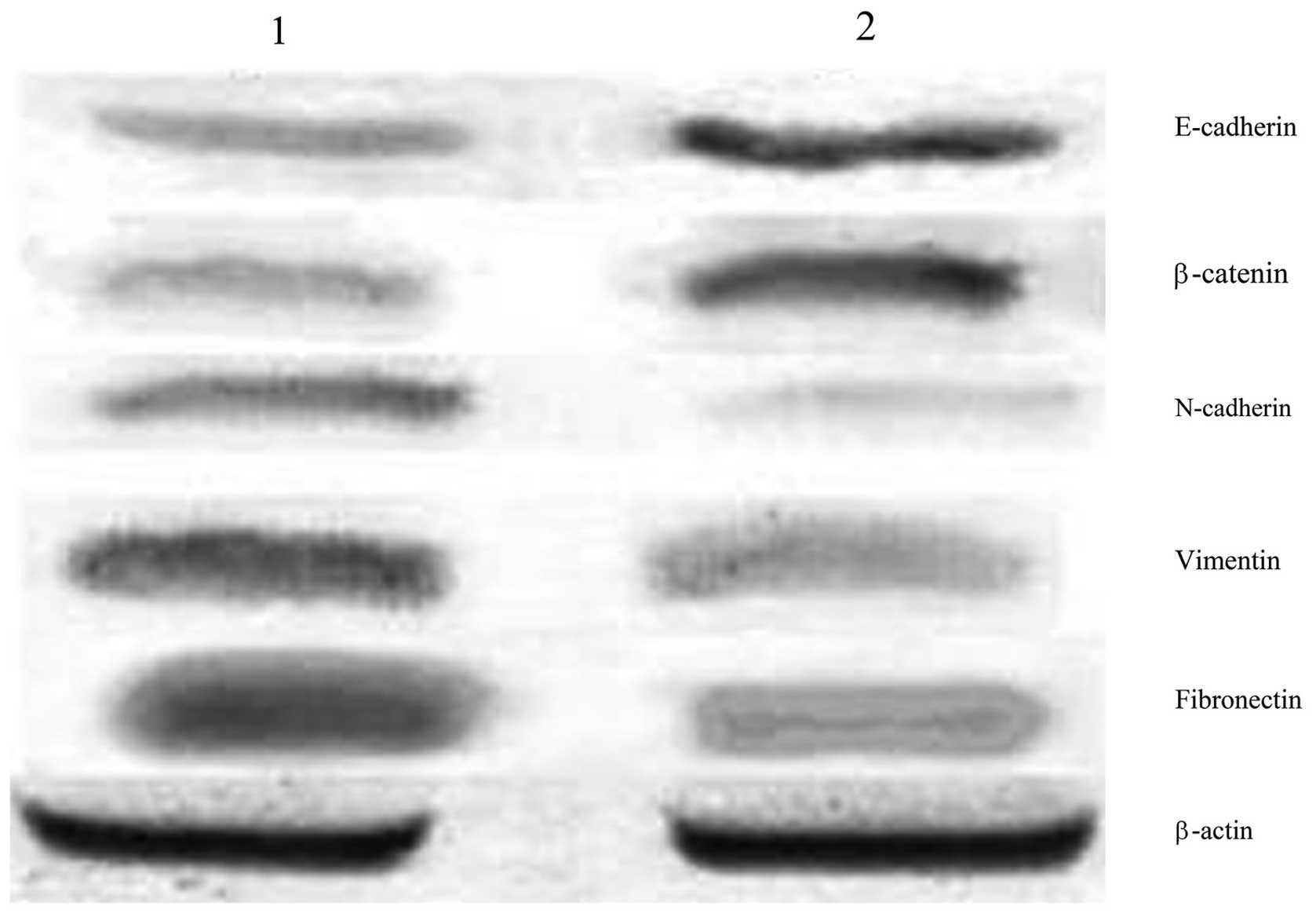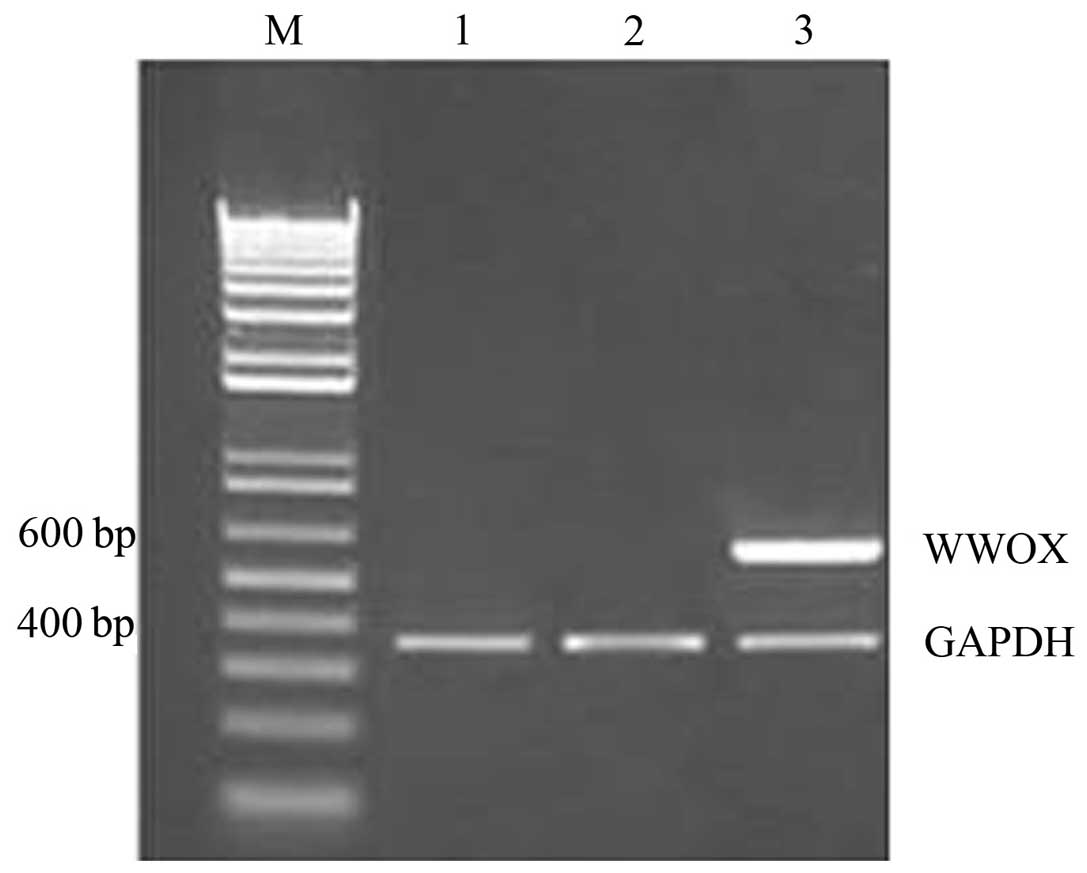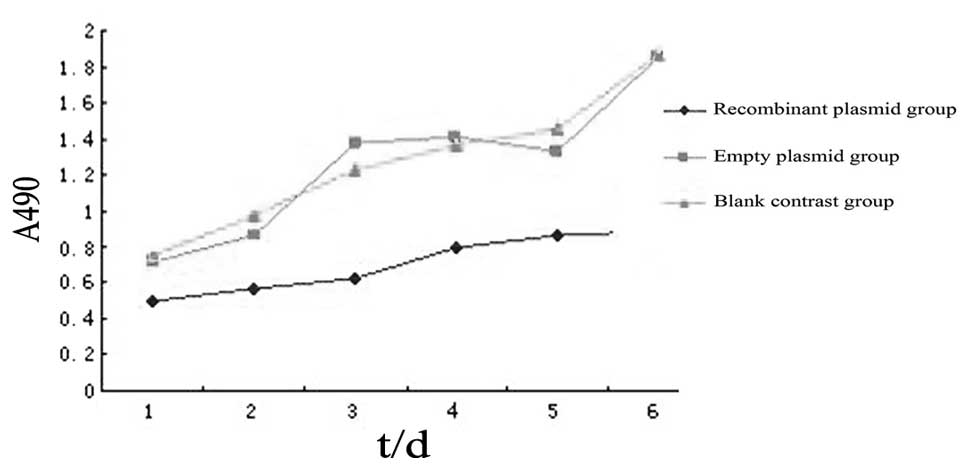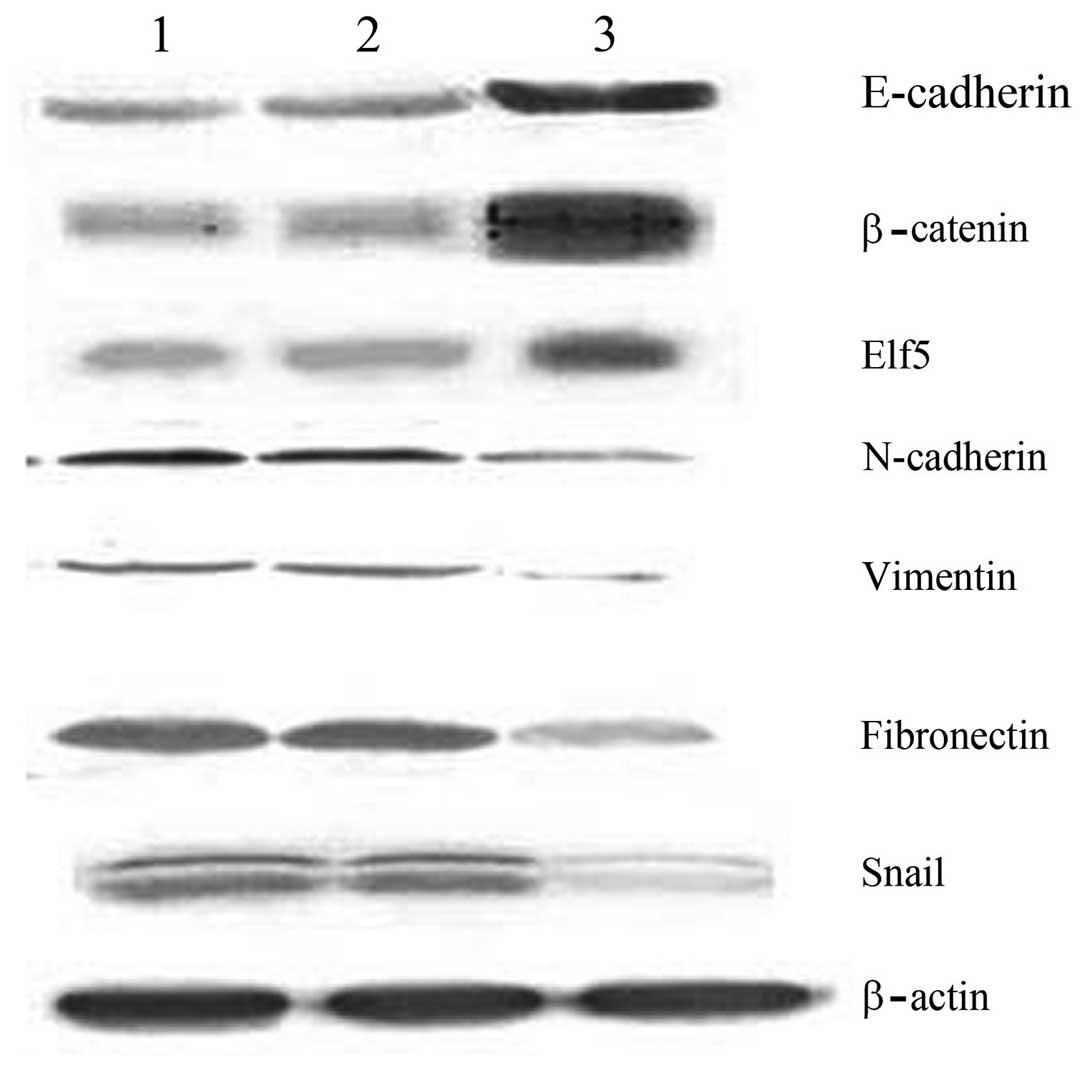Evaluation of the mechanism of epithelial‑mesenchymal transition in human ovarian cancer stem cells transfected with a WW domain‑containing oxidoreductase gene
- Authors:
- Published online on: April 14, 2014 https://doi.org/10.3892/ol.2014.2063
- Pages: 426-430
Metrics: Total
Views: 0 (Spandidos Publications: | PMC Statistics: )
Total PDF Downloads: 0 (Spandidos Publications: | PMC Statistics: )
Abstract
The aim of the present study was to investigate the impact of the WW domain‑containing oxidoreductase (WWOX) gene on the mechanisms underlying epithelial‑mesenchymal transition (EMT) in human ovarian cancer stem cells. Western blot analysis was performed to detect the differences in the expression of the EMT markers, E‑cadherin, β‑catenin, N‑cadherin, vimentin and fibronectin, between human ovarian cancer stem cells and the human epithelial ovarian carcinoma cell line, HO‑8910. A pcDNA3.1‑WWOX eukaryotic expression vector was subsequently transfected into the ovarian cancer stem cells (recombinant plasmid group) or an empty plasmid (empty plasmid group) and non‑transfected ovarian cancer stem cells (blank control group) served as the controls. Following the transfection of the WWOX gene, methyl thiazolyl tetrazolium cell viability and Transwell® invasion assays, and western blot analysis were performed to detect changes in the proliferative capability and invasive capacity of ovarian cancer stem cells, as well as the expression of EMT markers and regulatory factors, Elf5 and Snail. The expression levels of E‑cadherin and β‑catenin in the ovarian cancer stem cells were identified to be significantly lower than those in the HO‑8910 cells, whereas the expression levels of N‑cadherin, vimentin and fibronectin in the ovarian cancer stem cells were found to be significantly higher than those in the HO‑8910 cells. At each time point, the cellular proliferative capacity of the recombinant plasmid group was observed to be significantly lower than that of the empty plasmid or blank control groups (P<0.05 vs. the controls). The number of penetrating cells in the recombinant plasmid, empty plasmid and the blank control groups were 105.5±3.1, 199.7±3.4 and 191.4±4.1, respectively (mean ± standard error of the mean; P<0.05 vs. the controls). In addition, the protein expression of E‑cadherin, β‑catenin and Elf5 in the recombinant plasmid group was found to be significantly higher than that in the other two groups, whereas the protein expression of N‑cadherin, vimentin, fibronectin and Snail in the recombinant plasmid group was significantly lower than that in the other two groups. An EMT exists in ovarian cancer stem cells, and the WWOX gene inhibits the cellular proliferation of ovarian cancer stem cells and reduces their invasive capability. Therefore, the WWOX gene may reverse the EMT in ovarian cancer stem cells by regulating the expression of the EMT regulatory factors, Elf5 and Snail.













